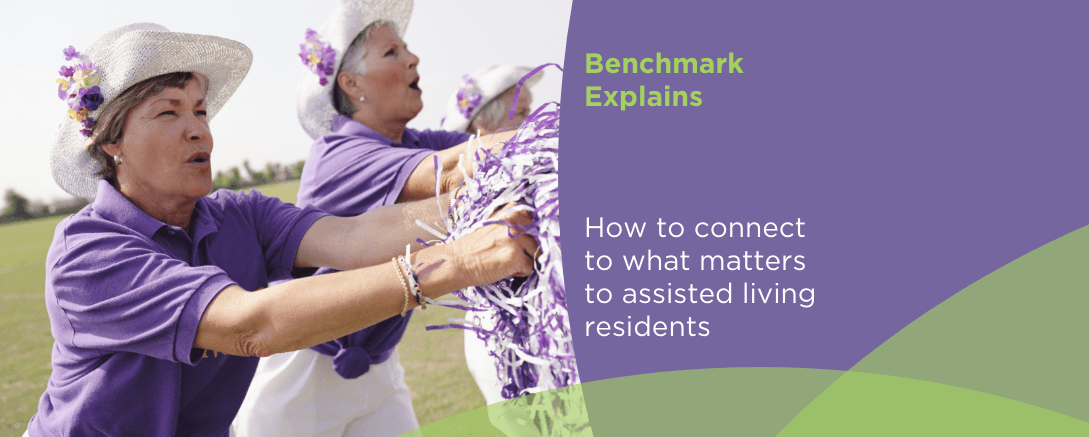How to Connect to What Matters to Assisted Living Residents

Many potential residents are concerned and apprehensive about moving into senior living. They are worried that they may have to adapt to their new living environment in a way that is contrary to their lifestyle choices or personality. Senior living communities must demonstrate a deep commitment to resident health and happiness from an operational and service delivery standpoint to overcome these fears.
Support All of Your Residents
It’s important for residents to feel free to be themselves. If they are outgoing, friendly and want to interact with people, there are plenty of opportunities to do that in senior living. If they are more introspective and like solitary pursuits like reading or watching TV in their rooms, they should be able to do that without anyone nagging them to participate in activities they’re not interested in.
The key is for residents to feel comfortable and make choices that are right for them; they want to feel like they fit in without having to change who they are. At Benchmark, residents get a say in how they live their daily lives, leading to increased independence and happiness.
Know Who You Serve
Most communities offer activities and amenities suited to the older lifestyle. In independent living, the average resident age is 82, and many residents are on the go, living life the way they want. They could be active with their family and friends, or busy doing the clubs and activities they love.
In assisted living, the average age is 87, and while these residents may need assistance with the activities of daily living, that doesn’t stop them from pursuing group activities and enjoying the friendships they have formed with other residents.
The average senior living population is 80 percent female, but men are an important part of the community, too! There are lots of games and activities that meet their needs — and on any given night, there’s likely to be a sports game on TV that many of the women enjoy watching as well as the men. As you can see, each facility will have its own unique needs in order to engage and support its residents. As you craft your facility’s programming, get to know your resident population to ensure your activities and programs are well-suited for your group.
Staff with Compassion
Those responsible for staffing senior living communities should have an affinity for the different personalities and backgrounds of the residents they are serving. Each resident is unique, and your staff should be prepared to provide each one the individualized care they need.
As such, it’s important for these staff members to acknowledge that they will be interacting with individuals with varying levels of acuity and functionality. Encourage your staff to get to know residents people, by asking about:
- Their likes and dislikes
- Their families
- Their hobbies
- Their preferences about eating in the dining room or in their rooms
- The activities they like to participate in
- If they wish to go to religious services
- If they’re gregarious or like to keep to themselves
- And more
Understanding these preferences will help staff members forge a better connection with residents, and it helps to make the resident’s experience at their senior living community more pleasant and fulfilling.
Connecting with Residents is the Key to Better Care
Ultimately, assisted living care is not one-size-fits-all. Each resident has their personalities, experiences, preferences and care needs, and your facility should be prepared to accommodate these as best as possible.
By getting to know your residents on a personal level, your facility will be able to adapt and support each resident in the way that matters most.


